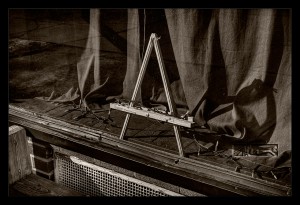The way I see it — there is a big difference between a series and a sequence. While I believe that every image should be as complete as possible, I also believe that a single image is usually not enough to tell a complete story.
Generally speaking, a series is a range of images around a theme or idea. The images support a central concept but can generally be read in any order.
A sequence on the other hand, is meant to be read in a particular order. It is important to start with the first image and move through the images as if pages in a book.
To me, a group of images within a single framing is a single image. It falls into the category of a collage. I see nothing wrong with that as a way to work, but it remains a single example of a photographer’s work.
As a photographer, you use these guidelines as a way to direct and inform your viewer.
A single image can be compared to a book with a single word or sentence. I think multiple images show that a photographer might see more than a single occurrence from a single perspective. It tells the audience that your single example is not just a fluke.
Multiple examples show that the image-maker has done some homework and shows the level of they’re understanding.
A body of work indicates that the photographer has looked at the subject in greater detail and considered in greater length. It represents a larger group of evidence regarding the concept he/she is putting forth in their work.It tends to add proof to support what you are attempting to say.
A great body of work doesn’t show the same thing over and over. It shows a string of relationships and perspectives that are relevant to the primary concept being put forth. It poses questions for the viewer to solve — as in a puzzle.
It is the viewer who needs to work through the problem you are posing. An image aims to stir the imagination of the viewer. The reward, is an understanding of the image. It is what gives an image its value.
Like a book or a play, the use of multiple examples enhances the viewers experience. It underscores the message and makes it possible for a more complete encounter with the photographer’s works.
Related links:
The rule for breaking the rules in photography
Photography is best as critical thought
Buy my book – Book – Focus
NOTICE of Copyright: THIS POSTING AS WELL AS ALL PHOTOGRAPHS, GALLERY IMAGES, AND ILLUSTRATIONS ARE COPYRIGHT © JOHN NEEL AND ARE NOT TO BE USED FOR ANY PURPOSE WITHOUT WRITTEN CONSENT FROM THE WRITER, THE PHOTOGRAPHER AND/OR lensgarden.com. THE IDEAS EXPRESSED ARE THE PROPERTY OF THE PHOTOGRAPHER AND THE AUTHOR.



